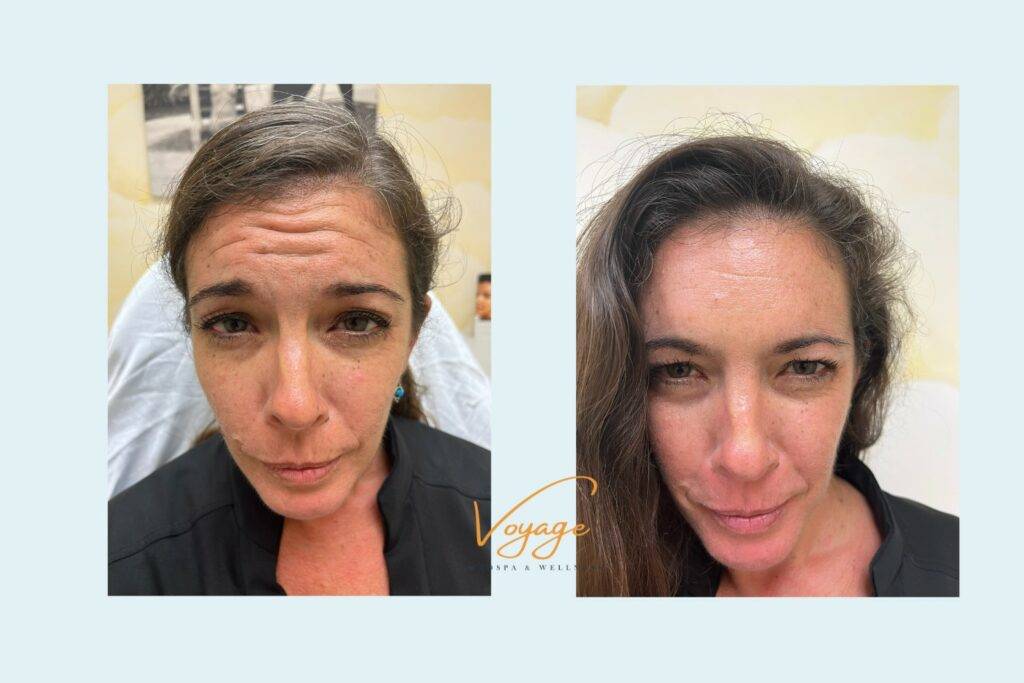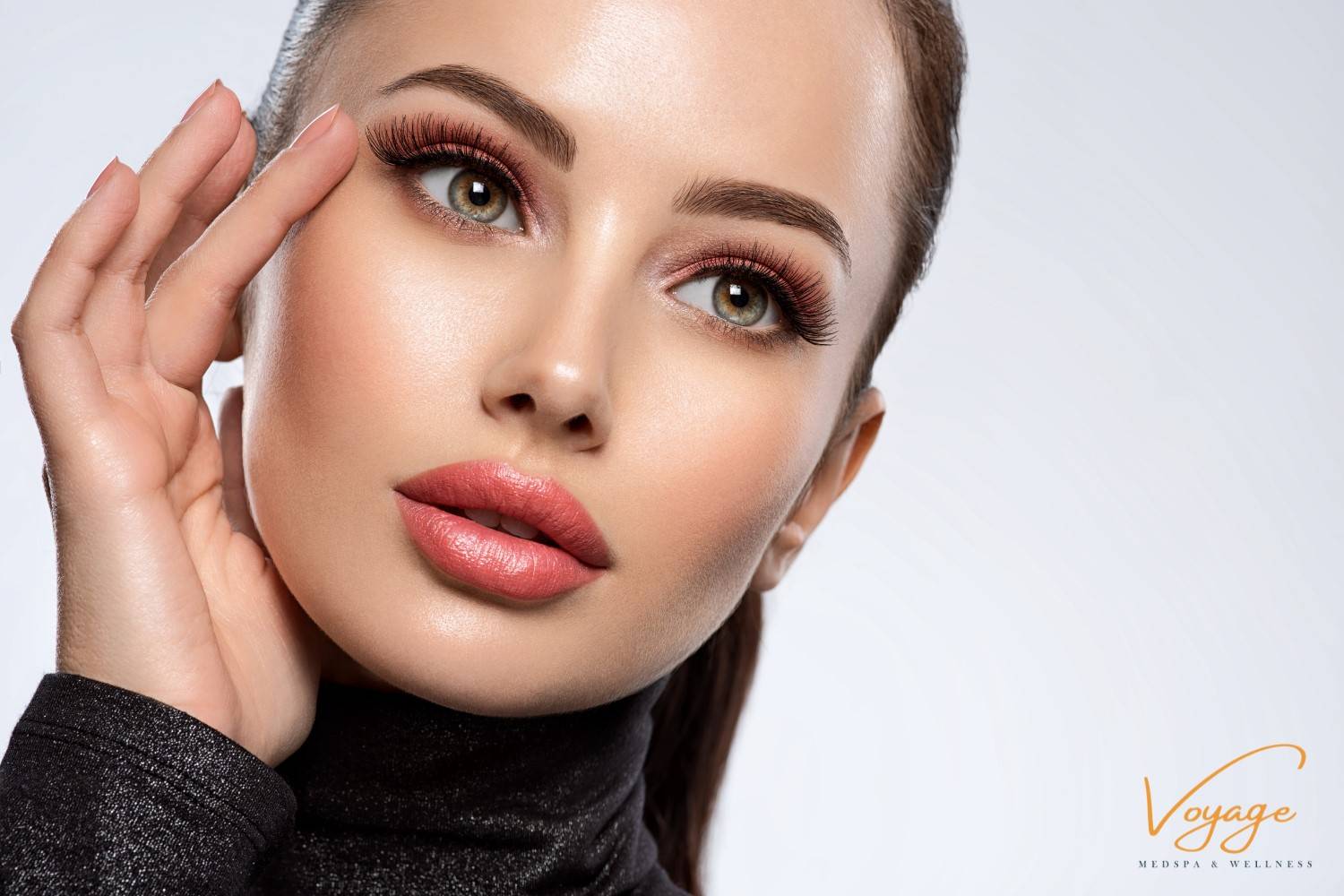Botox vs Dysport- A very common question asked everyday.
Botox and Dysport are both popular medical treatments used for smoothing wrinkles. They reduce fine lines, and create a more youthful look. But what are the differences between the two? In this article, we’ll discuss the differences between Botox and Dysport and which one may be the best choice for you.
What is Botox?
Botox is a brand name for botulinum toxin type A, which is an FDA-approved medication. It is used to temporarily improve the appearance of wrinkles and lines on the face. Being FDA approved means it has gone through and passed clinical trials. It is derived from the bacterium clostridium botulinum. It is developed by the pharmaceutical company Allegan. Botox reduces the appearance of fine lines and wrinkles. It works by blocking signals between nerves and muscles in order to stop muscle contraction that causes wrinkles. Botox injections are often used to reduce the look of wrinkles. Common face wrinkles are frown lines between the eyebrows (glabella lines), crow’s feet around the eyes, horizontal forehead lines, and other wrinkles. Botox cosmetic injections maintain treatment effects for several months. However, some people may need additional treatments to maintain desired results.
Botox is also used for aesthetic treatments, it is used in a variety of medical applications. These medical applications include treatments reducing muscle spasms in the neck and treating overactive bladder.
What is Dysport?
Dysport is also a botulinum toxin. It is developed by the pharmaceutical company Galderma. It works in the same way as its predecessor Botox. It uses a purified form of botulinum toxin to relax facial muscles and reduce wrinkles and other signs of aging. It is also derived from the bacterium clostridium botulinum. Dysport also contains the same active ingredient as Botox: botulinum toxin. This neurotoxin is FDA approved for use in aesthetic and therapeutic applications. including the treatment of wrinkles around the eyes (crow’s feet) and forehead as well as excessive sweating. Dysport injections should be administered by an experienced physician for optimal results. Dysport treatment is a non invasive treatment.
Is Botox and Dysport the same as a dermal fillers
No. A dermal filler is made from hyaluronic acid a substance similar to the hyaluronic acid produced by our bodies. Fillers give structure and volume to the body tissue. Botox and Dysport on the other hand, are also non invasive treatments which relax muscle movement. All three cosmetic injectables are great effective treatments for reducing wrinkles.
Differences between Botox and Dysport
The differences between these two injectable treatments (neurotoxins) lie in their chemical structures. Each injectable treatment works by blocking muscle contractions to soften facial wrinkles and create a smoother complexion. Although both injectable treatments are similar, they can vary slightly in efficacy. Their onset time of action also varies when used for treating fine lines and wrinkles.
Many physicians prefer Dysport due to its shorter onset time, making it the best choice for clinical practice. Botox, however, may produce longer-lasting results and can be used to address larger wrinkles as well. Ultimately, the best choice for an individual patient will depend on their unique needs and concerns. Therefore, it is important to discuss the options with a medical professional before selecting a treatment plan. They will also talk to you about botox vs dysport for glabellar lines.
Differences in Chemical Structure
Both Dysport and Botox are cosmetic treatments used to reduce wrinkles, but they have different chemical compositions. Botox is a purified form of botulinum toxin type A produced by Allergan. Dysport is also a form of botulinum toxin type A but manufactured by Galderma Laboratories. The manufacturing process for both products is slightly different, resulting in some changes in their chemical structure.
These neurotoxins contain proteins that block nerve signals from reaching the muscles, preventing them from contracting. However, Disport is composed of smaller molecules than Botox, which means it spreads out more quickly and easily over a greater area than Botox. This allows doctors to use less Dysport to achieve the desired results.
Differences in Duration of Action
When evaluating the primary difference between Botox and Dysport, it’s important to understand their primary applications in cosmetic dermatology.
Both substances are pure forms of the same neurotoxin, but their durations of action differ due to a cosmetic dermatology procedure called “diffusion”.
Essentially, Botox is more concentrated and “focused” in the area being treated. Dysport has a larger area of diffusion, which allows for greater coverage but also causes its effects to wear off faster. Dysport is a great product for forehead lines and crow’s feet. Botox is a great product for frown lines (glabellar lines).
Botox is more concentrated and can last up to four months, while Dysport is formulated with less active toxin so it has a shorter duration of action, lasting up to three months.
Dosage
When it comes to Botox or Dysport, the dosage differs. Botox treatments usually require 20-50 units per treatment area. Dyport on the other hand calls for more units (up to 100). The effects of botox and dysport will last up to four months before another treatment is needed. It is important to consult with your doctor before deciding which treatment is best for you.
Clinical Implications of Botulinum Toxin Therapy
Uses in Aesthetic Procedures (cosmetic treatments)
Botox and Dysport are widely used in aesthetic procedures for wrinkle treatment. The most common use is to reduce wrinkles and give the face a smoother, more youthful appearance. When injected into muscles underlying facial wrinkles, Botox or Dysport temporarily relaxes them, reducing the lines they cause and giving a liquid facelift effect. A liquid facelift is a cosmetic treatment where dermal fillers alongside botox is used. Very often chemical peels would be recommended with this treatment to remove fine lines. The result of this treatment is a remarkable reduction in fine lines and wrinkles (forehead lines, frown lines, crow’s feet). With a liquid face lift, one can hold off on plastic surgery for many years.
Uses in Medical Treatments
Botox and Dysport are widely used treating patients with medical conditions. These medical conditions include neck pain, abnormal head position, hyperhidrosis (excessive sweating), and many others. Both neurotoxins temporarily paralyze the muscles in the treatment area, allowing them to relax. This can be especially helpful in alleviating neck pain caused by spasms in the neck and shoulder muscles. Botox and Dysport is also approved to treat abnormal head position by reducing neck muscle tone in children aged 2-17 with cerebral palsy.
Botox has even been used to reduce jaw pain caused by temporomandibular joint dysfunction (TMJ).
These treatments mentioned above are FDA approved medical applications of both Botox and Dysport..
Aesthetic Treatment Areas
Several treatment areas sites where botox and dysport can be placed by a plastic surgeon. A common treatment area is the frown lines also known as the glabellar lines. Prominent glabellar lines can give you a stern appearance. Severe wrinkles in the glabella area can be very difficult to get rid off completely, however Botox and Dysport can improve the appearance. It’s best to start early, instead of waiting until you have those deep, etched lines. Another common area of treatment is the forehead wrinkles. Forehead wrinkles can make people appear older than their chronological age. Crow’s feet (the lines around the eyes) can get etched into the skin with age and time. One of botox benefits is improving the appearance of these wrinkles.
Neuromodulators can also be used to improve and treat erectile dysfunction. It can also help you enlarge the size of your gentile by improving the blood flow into the penis.
***
Side Effect of Botox vs. Dysport
Both Botox and Dysport are popular treatments for wrinkles and fine lines. While both of these medications have a range of benefits, there can be certain potential side effects associated with them. The risk of getting allergic reactions to either medication is possible but rare. Slight pain may occur at the injection site when administering Botox or Dysport. It is also possible to experience a mild headache after the injection. Typically, these side effects are temporary and should disappear within a few days. Botox and Dysport both provide effective results for reducing wrinkles and fine lines. So if you’re looking to reduce the signs of aging (get rid of your glabella lines), either could be an option worth considering. Be sure to discuss any concerns with your doctors or board certified dermatologists prior to your treatment.
Cost Comparison of Dysport vs. Botox
The cost of Dysport and Botox varies from practice to practice. Because the knowledge of knowing where to place the injection sites is an art. Most board certified doctors and cometic dermatologists will charge a price of their knowledge or skill set. The art of aesthetics is knowing where and how much product to place to create a youthful look while maintaining a natural facial expressions. According to the American Society of Plastic Surgeons, the average cost is $466 per session, the same as Botox.
How Many Units of Botox vs. Dysport
When considering how many units of products to use for your initial consultation, it’s important to understand how the two treatments compare. Both neuromodulators have different strengths and concentrations.
Dysport has a larger molecule than Botox, which means it spreads more easily and can reach a larger area. It acts faster than Botox and requires fewer units for the same results. Dysport typically contains 300 units per vial, while Botox only has 100 units per vial. This means that on average, you may need half as much product when using Dysport as opposed to Botox for the same results.
However, how many units you will need ultimately depends on how much coverage is desired. It also depends on how deep your wrinkles are, your muscle contractions and how severe your lines are. Dermatologists, plastic surgeons or medical aestheticians can help you decide which treatment is best for you.
Dysport vs. Botox injection site pain
When comparing Dysport vs Botox, there is no difference in injection site pain. They are equally about the same. Some patients say injections feel like tiny mosquito bites while others do not feel any form of discomfort at all.
Your doctor will ask you to avoid sun exposure on the day of your treatment.
Frequency of Treatment
You should have treatments every 3 to 5 months to maintain your treatment effects of fewer wrinkles. Your board certified physician will guide you on when to have your next treatment.
Both neuromodulators can reduce vertical lines (glabella lines), horizontal forehead lines. They provide a smoother, younger-looking appearance with minimal downtime. Additionally, regular maintenance treatments will prolong the effects of your treatment. Talk to your doctor about whether Dysport or Botox is the right treatment for you as you search for wrinkles treatment near me.
Botox and Dysport in St Pete FL Voyage MedSpa & Wellness
At Voyage MedSpa and Wellness, our goal is to provide patients with the most modern, safe and effective options available for facial rejuvenation and skin condition treatment. This is why we offer treatments of Botox and Dysport in St Petersburg, FL.
Our Experienced and Board Certified Physician, Dr. Ben-Kane has been expertly treating both men and women for many years. You are guaranteed both noticeable results and permanent results. We provide customized treatments to get you smooth skin. Visit us for the best dysport in St Pete.
If you are looking for the dysport near me at a med spa in St Pete FL, contact our office today to schedule a consultation with Dr. Ben-Kane or call us on (727) 498-6992. During your consultation Dr. Ben-Kane will go over the difference between xeomin vs botox vs dysport.











